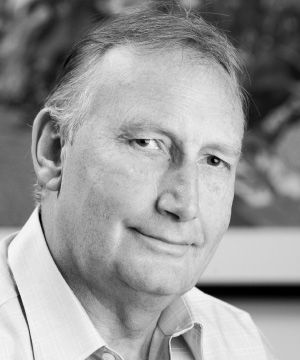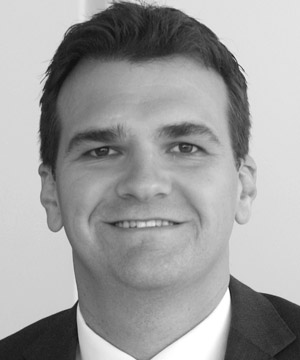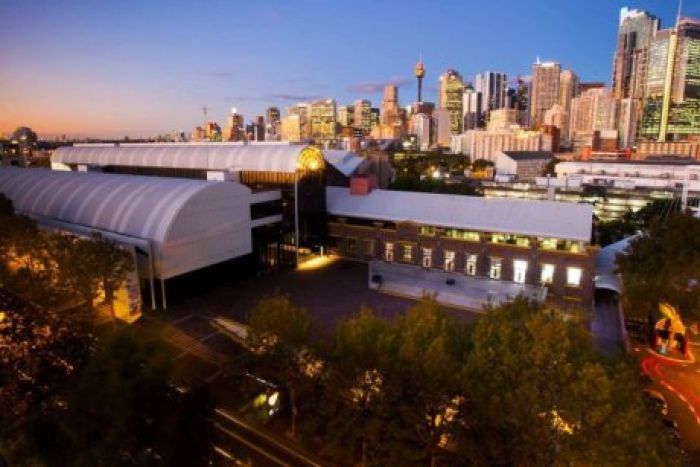Beware governments that talk about community consultation, but in practice fall in with the wishes of the developers. At the end of July, after months of speculation and in flagrant disregard for her own government’s community consultation process, NSW Premier Gladys Berejiklian announced that the Powerhouse Museum would after all be moved from Ultimo to Parramatta, as resolved by her predecessor Mike Baird two years ago.
It was an outrageous move, coming on the eve of the second of two planned community consultation meetings. The Coalition government had convened these only under great pressure. Attendees had been asked to register and send in their top three questions about options for Parramatta and Ultimo in order to give input to the “extended business case” for the proposed move.
The first meeting, in Parramatta on July 26, revealed that contrary to the Coalition’s hopes, most Western Sydney attendees wanted the museum to remain in Ultimo. They were clear that the neglected western suburbs were in serious need of cultural infrastructure but preferred either an art gallery (the option favoured by Parramatta Council’s own cultural plan), a satellite for exhibitions from all CBD institutions, or a museum of their own area’s rich indigenous, colonial and modern history.

Premier Gladys Berejiklian and Minister for Western Sydney Stuart Ayres
The second consultation meeting was held at the Ultimo museum on July 31, but that morning Berejiklian pre-empted it. She announced that a deal had been finalised with Parramatta Council to buy the proposed flood-prone riverside site for the Powerhouse move. Presided over by external private contractor Brian Elton and Department of Planning project manager Craig Limkin, and addressed by Arts Minister Don Harwin, the Ultimo audience was left in confusion over what precisely it was allowed to consult about. Nonetheless there was a clear preference for the museum to remain in Ultimo.
For all the window dressing about retaining a “cultural space” at Ultimo, the Premier had made it clear that construction of apartments on the site would go ahead.
In opposition to the pro-developer view, a key paper by museum consultant Kylie Winkworth has shown how the push to sell off the Ultimo site was “stitched up” by Infrastructure NSW (INSW). Set up by Premier Barry O’Farrell in 2011, INSW’s first chairman was former premier Nick Greiner, who had built a post-politics career as director of a number of development companies, including as chair of Lend Lease Infrastructure. The role of INSW has been to open the door to developers taking advantage of the Coalition’s sell-off of public assets. No doubt developers waiting in the wings for the lucrative Ultimo deal are now rubbing their hands. As Winkworth says: “Today power, planning and cultural decisions reside with INSW and the government’s infrastructure and property departments.” To the detriment of cultural institutions which, under the notorious “efficiency dividend” budget cuts, continue to lose experienced staff.
Utopia moments at the parliamentary inquiry
It wasn’t only the Ultimo meeting that was blindsided by Berejiklian’s announcement. Since June 23 last year, an Upper House committee of the NSW parliament has been conducting an inquiry into museums and galleries. Set up after the furore over the Powerhouse plan sparked debates in parliament, its terms of reference include consideration of the proposed move to Parramatta.
The appointment of Robert Borsak MLC of the Shooters and Fishers Party as committee chair was initially greeted by many with understandable scepticism. But in an unlikely alliance with fellow committee members including Greens MLC David Shoebridge, he has proved to be very good at asking probing questions. Taking submissions from some of the country’s most experienced museum professionals, the committee established that the risks and costs of moving the priceless Powerhouse collection had not been accurately estimated and would probably blow out the overall cost of the project to at least $1.5 billion.
The committee has extended its timeline more than once, for example to enable further questioning of Professor Barney Glover and Dolla Merrillees, respectively chair and director of the Museum of Applied Arts and Sciences (MAAS) of which the Powerhouse is part. The committee’s report was finally due to be delivered this week. Now, however, the reporting date has been extended to November 30.
The publicly available transcript of the committee’s most recent hearing, on June 6, gives some idea of why. It makes fascinating reading. Giving evidence were Arts Minister Don Harwin and three officials of the Department of Planning and Environment, including the aforementioned Craig Limkin, who is acting executive director of the Cultural Infrastructure Program Management Office.
Think: Rob Sitch’s Utopia. Or George Orwell’s 1984 Newspeak.
Arts Minister Harwin opened with a statement in which he said “this is one of the most exciting periods for arts and culture in the recent history of New South Wales” and went on to say that on assuming the portfolio he had found that the business case for the Parramatta move did not allow for any “cultural space” to remain at Ultimo. He was now recommending to Cabinet that some presence be retained. Asked by Labor’s Walt Secord what “cultural space” meant, he said he was “not limiting it” – it could be anything.
Pressed by Secord and Shoebridge over the options for Parramatta and Ultimo, the minister deferred to Limkin, who made it clear that this came under the “extended” business case being prepared. This was a Cabinet document. In other words, Cabinet-in-confidence. He wasn’t giving out details.
In a further exchange he explained the two-step process required by Treasury: “The preliminary business case constitutes the planning framework for the business case and is used to demonstrate and justify the service rationale, consider service delivery alternatives and also inform internal agencies of priority settings. The final business case documents and defines the project and contains an updated justification for service delivery and service rationale, determines the value for money and demonstrates the agency has the capacity to implement the service…”
Cue Groucho Marx and “the party of the first part”. From the chair, Robert Borsak later said that he did not want to hear any more “Treasury speak”.
Asked whether there would be community consultation before the “final business case” was finalised, Minister Harwin and Limkin both assured the committee that there would be. We now know what happened to that.
Dead cats and consultants
During the hearing, David Shoebridge asked Limkin who was the lead consultant on the project and was told it was Johnstaff Projects. But when he asked whether Johnstaff Projects was the only organisation that had tendered for what he called “this particular dead cat of a project”, project manager Limkin was unable to say – MAAS had handled the tender process.
Johnstaff Projects, according to its website, promises to “tailor our advisory, planning and delivery services to deliver maximum return on your investment”. Its clients include Crown Casino Melbourne (project value $2.1 billion) and WestConnex Stage 2 (value $5 billion) as well as various hospitals and aged care facilities. Quite what the company knows about museums is unclear.
The parliamentary committee was left with many unanswered questions – not only about the Powerhouse move but about an overall strategy for the arts, about the future for cultural investment in the regions, and about the other major institutions. It hasn’t even begun to investigate the future of the Art Gallery of New South Wales and its much-vaunted Sydney Modern Project to which the Berejiklian government has promised $244 million.
It’s to be hoped that the inquiry will look further into the use of consultants, too. In her last year as state Treasurer Berejiklian spent $64 million on consultants and NSW agencies have been following suit. In the same year the AGNSW alone spent $1.6 million on consultants – more than four times as much as its highly successful Victorian counterpart, the NGV.

Elton Consulting managing partner Brian Elton
One of those consultancies, Elton Consulting, was employed at the Powerhouse during 2016 on a component of the business case for the move to the new museum. Its website says it was engaged by the AGNSW in 2014 to “assist with communication activities for the Sydney Modern Project”. In other words, it’s been working for both the Powerhouse move and the AGNSW, on projects that involve negotiations with government that are surrounded by extraordinary secrecy.
The Elton website boasts that for Sydney Modern, the company provided action plans for each announcement, “provided strategic advice regarding project influencers” and has “successfully built awareness and excitement throughout the broader community” as well as among key stakeholders. Surprising, then, that public reaction to the government’s big funding announcement in June was less than rapturous. Never mind. The executives handing out wads of public funds seem happy enough – Elton Consulting has an “ongoing role” at the AGNSW.
Who are the consultants who have such influence over two of our most important cultural institutions? The managing partner of Elton Consulting is Brian Elton, formerly general manager of housing services at the NSW Department of Housing. (The state of residential accommodation in Sydney requires no comment.) As a consultant he has worked on the lucrative Green Square for Mirvac, Landcom and Leighton, and for the NSW government on the Barangaroo project.
Like Brian Elton, CEO Kim Anson also formerly worked for the NSW Department of Housing as an executive director. Partner Dan Steward, who heads the Canberra office, worked for 14 years for the ACT government. Jenny Rudolph, another partner, previously worked for the NSW Department of Planning and Landcom.

Elton Consulting associate director Brett Cox
According to the company’s website, associate director Brett Cox, a media and communications specialist, led the “public affairs and parliamentary strategy for the most major NSW industrial relations reform in at least five years” and also had “central involvement” in the $20 billion lease of the state’s electricity poles and wires assets. He was chief of staff, no less, to Gladys Berejiklian during her time as Treasurer and Minister for Industrial Relations.
This surely raises questions about the nexus between government, developers and consultants. It’s high time to inform the public of all the consultancy firms involved in the government’s cultural infrastructure projects, to release the amounts of public money expended on them, and to declare who are the “project influencers” with whom they have dealings.
Both the Powerhouse issue and the Sydney Modern project have a long way to run, and there are huge sums of public money to be accounted for. The $100 million the government has allocated as a sop to regional cultural infrastructure – a sum that won’t even fix existing buildings – pales by comparison. Watch this space.
Meanwhile, I can only agree with Sydney’s former arts tsar Leo Schofield, who was heard saying last week: “Business case? What’s the point of a business case for a museum? They’re not there to make money.”
If you have concerns or information about the issues discussed here, please feel free to comment below or email judith@cultureheist.com.au





The Parramatta Female factory site in Fleet Street is a case in point, Gladys is making decisions to follow in Baird’s footsteps, it is debacle which will see Parramatta robbed of a site so important for not only history but Australian Aboriginal, Convict and Colonial heritage which could bring in billions of dollars in Tourism, the idea to fall in with developers with the help of Administrator Amanda Chadwick which will see the site sliced up, sold off to developers for high rise is the ultimate betrayal of the people of Australia. Once it is sold, it is gone forever.
Fantastic piece of journalism.
Al Capone carried his “extended business case” everywhere.
Asked why he did this, Al explained that it “successfully built awareness and excitement throughout the broader community”.
Judith, as a Sydney-born Canberran who retains a keen interest in my birth state, I am gobsmacked at the way the NSW Government operates – selling off valuable public assets without thought to future generations; grasping at every developer dollar they can; creating unnecessary freeways when every other modern economy shifts to greater investment in public transport, which in turn helps the environment, social cohesion, etc; and which appears to live to serve its mates and cashed-up insiders. What to do? Your work on the desecration of cultural institutions is powerful and persuasive, but a movement is needed to support your voice and stop the rot. Where to from here?
This level of public asset stripping is criminal.
Thank you for writing this excellent expose of cultural vandalism.
Unless we get big money out of politics, this apparentlly corrupt kind of process will go on and on and on.
Thanks Judith. I can hardly cope with watching Utopia. But this is far worse because it’s happening. It’s outrageous and very very stupid.
How can we stop these vandals? Obviously set up some time ago to line a lot of pockets & misusing our money!!!
I live in Tasmania.
Tasmania and its forest wars are used to win votes and destroy the Greens.
The Turnbull Government applied to have the World Heritage Listing of the Western Tiers in the North of theState removed from Listing to enable logging. .
UNESCO told him and his vandals to get stuffed.
It is no different to moving the museum to alloww the cronies a financial benefit.
Thank god for the internet these drongo’s cannot hide.
The problem is so few people actually care.
A very thorough piece. Thanks for this. What a disgrace. It seems that NSW was founded on corruption and cronyism and things haven’t changed much.
Some say that the Chairs of NSW Planning’s Community committees are paid by the Dept of Planning, while others say that the developers or projects such as mining, wind farms, rubbish gasification , elegant museum relocations to make way for more ugly towers, etc pay their fees. Does anyone know how much the consultants are paid, eg per year for each committee they chair? Does anyone know how members of these various committees are selected? Are the candidates’ submissions to the groups made public? Is there any oversight , as it seems that the wonderful Powerhouse is to be moved although no one wants it moved nad it is so perfect just where it is?